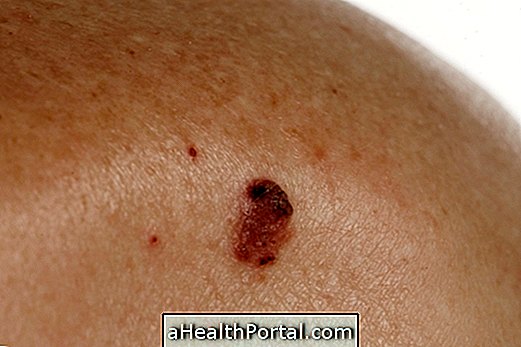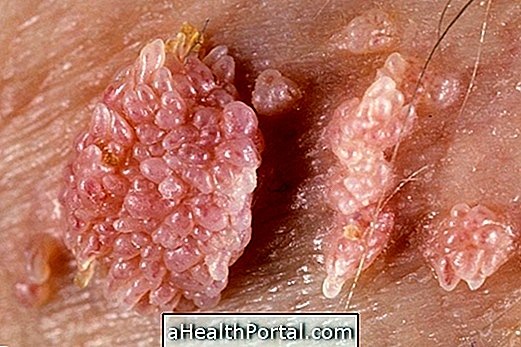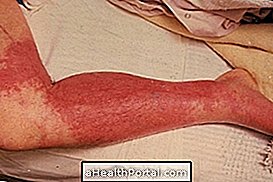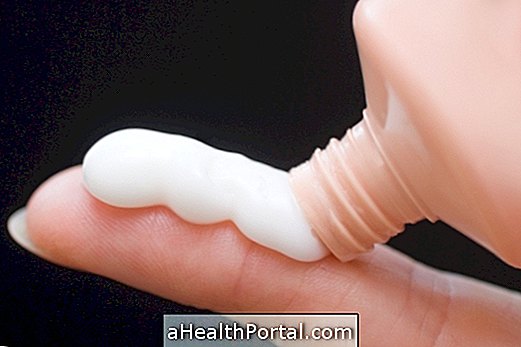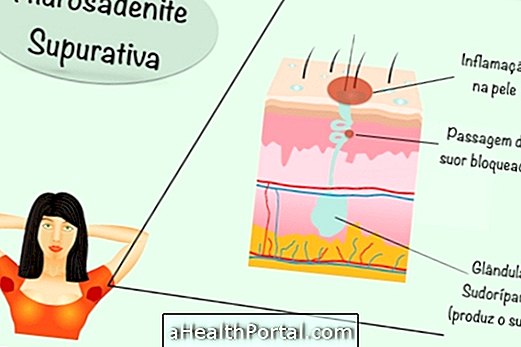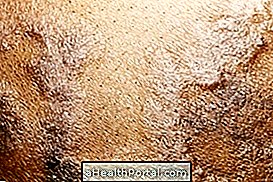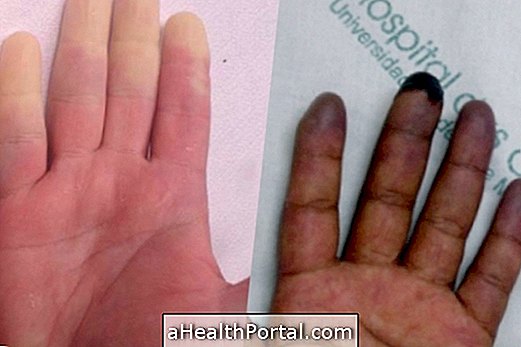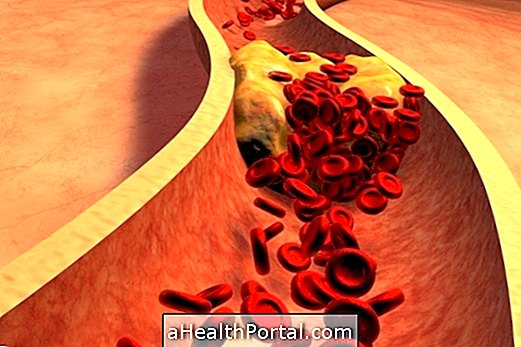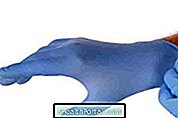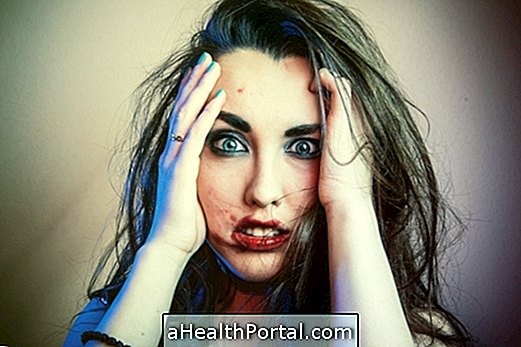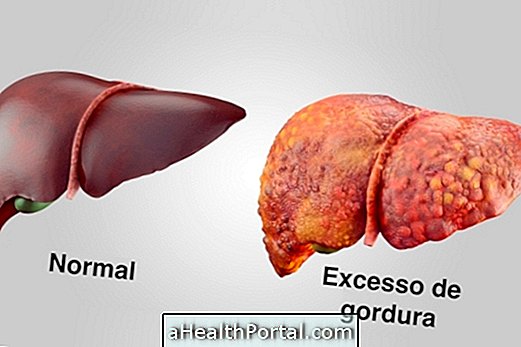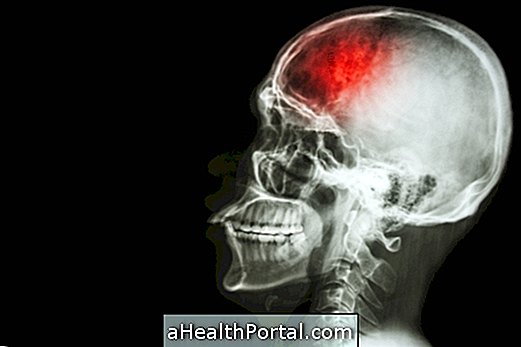Head injuries can have a variety of causes, such as folliculitis, dermatitis, psoriasis, or an allergic reaction to chemicals, such as tinting or straightening chemicals, for example. It is very rare that it is caused by a more serious condition such as skin cancer.
To identify the cause, it is recommended to seek a dermatologist, who can evaluate the scalp and, if necessary, request tests to identify the reason and indicate the best treatment according to each case.
So usually the treatment is done with special care for the scalp, such as washing regularly or avoid holding and wearing hats with wet hair, in addition to using shampoos and ointments that can soften the inflammation and help to heal the wounds, such as antifungal or corticoid based, for example.
Despite several causes of head injuries, some of the major ones include:

1. Seborrheic dermatitis
Also known as dandruff or seborrhea, seborrheic dermatitis is an inflammation of the skin that causes flaking, redness, yellowing of the skin, and itching of the scalp or other areas such as the eyebrows, ears, and corners of the nose .
Although its causes are not totally clear, this disease has a chronic evolution, with periods of improvement and worsening, and there is no definitive cure. Seborrheic dermatitis can be triggered by emotional stress, allergies, scalp oiliness, consumption of alcoholic beverages, certain medications or infection by the fungus Pityrosporum ovale .
- What to do : It is necessary to seek a dermatologist to start treatment, control the formation of wounds and avoid hair loss, using shampoos or ointments based on antifungals, corticoids or other components such as salicylic acid, selenium, sulfur or zinc.
It is also recommended to stop the use of hair creams and ointments, which make it more oily, make more frequent washes of the hair and avoid wearing hats and caps. Learn more about how to identify and treat seborrheic dermatitis.
2. Scalp ringworm
The most frequent mycosis of the scalp is called Tinea capitis, caused by fungi of the genus Trichophyton and Microsporu, and mainly affects children.
Tinea capitis fungi affect the hair shaft and follicles, and often cause circular, scaly, reddish lesions or yellowish scabs that cause hair loss in the affected region.
- What to do : The treatment is guided by the dermatologist, with antifungals like Griseofulvin or Terbinafine, taken for about 6 weeks. In addition, selenium sulfate or ketoconazole based shampoos can help eliminate the infection.
Check out more details on how to prevent and treat forms of mycosis of the scalp.
3. Allergic reaction
The reaction of the skin in response to the contact of chemicals on the scalp can also cause head injuries. Some of the products that can cause this type of reaction are hair dyes, progressive or definitive brush products such as ammonium hydroxide or formaldehyde, or any type of product that contains substances that cause allergic reaction in the person.
Injury may occur a few hours or days after contact with the product and there may be scaling, redness, itching or burning of the affected area.
- What to do : The first step is to find the cause of the reaction, avoiding contact with the product again. The dermatologist may advise the use of corticoids, tablets, creams or ointments, as well as anti-inflammatory and wound healing lotions to the scalp.
In addition, during the use of hair products, especially during the performance of chemicals such as progressive brush, it is recommended to avoid direct contact of the cosmetic with the scalp, reducing the chances of irritation and dryness of the area.

4. Folliculitis
Folliculitis is inflammation of the hair root, which is usually caused by infection with bacteria and fungi that live on the skin, causing the appearance of red, balls filled with pus and causing pain, burning and itching, which can cause the fall of hair.
- What to do : The treatment is guided by the dermatologist, and may include the use of antifungal shampoos, such as ketoconazole, or application of antibiotics such as Erythromycin or Clindamycin, according to the cause identified by the physician.
See more about the causes of folliculitis in various body locations and how to treat it.
5. Lice infestation
Also known by the scientific name of pediculosis, infestation by lice is more common in school-age children, caused by parasites that can live and multiply on the scalp, feeding on blood.
The bites of the parasite can cause small inflamed spots on the scalp, however, the wounds can arise due to the intense itching this infection causes, leading to the formation of scratches and scabs on the scalp.
- What to do : In order to eliminate lice infestation, it is recommended to use specific shampoos, fine combs and, if necessary, antiparasitic medications, such as Ivermectin, as directed by a physician.
To prevent pediculosis, it is advised to avoid sharing brushes, combs, hats and glasses, and prefer to remain with hair stuck in case of agglomerations of people. There are also repellent sprays that can be applied to hair sold at the pharmacy. Learn more on how to stop lice and nits.
6. Scalp psoriasis
Psoriasis is a chronic, inflammatory disease related to changes in immunity, which causes the appearance of red spots with an intense dry or whitish dry scaling.
In addition to the skin, it can also affect nails, which become thick and discolored, as well as joint swelling and pain. Psoriasis of the scalp causes intense itching and peeling of dead skin, similar to dandruff, in addition to hair loss.
- What to do : psoriasis treatment is done as recommended by the dermatologist, with lotions containing corticosteroids such as betamethasone, salicylic acid or clobetasol propionate.
Check out more details on how psoriasis treatment for the scalp is done.
